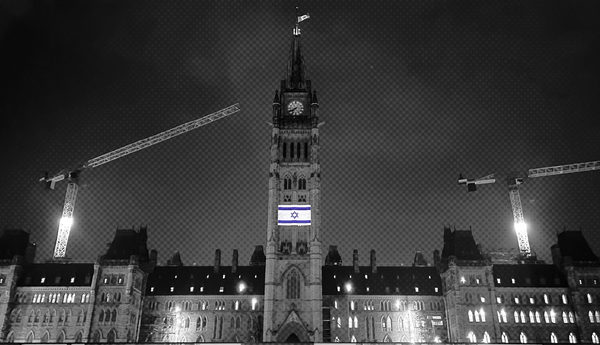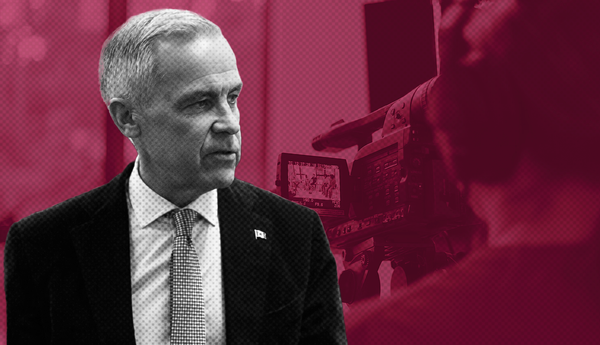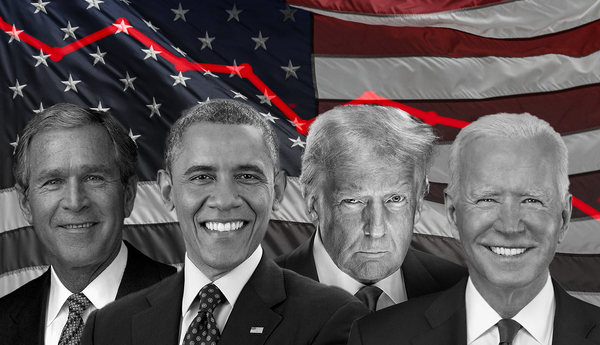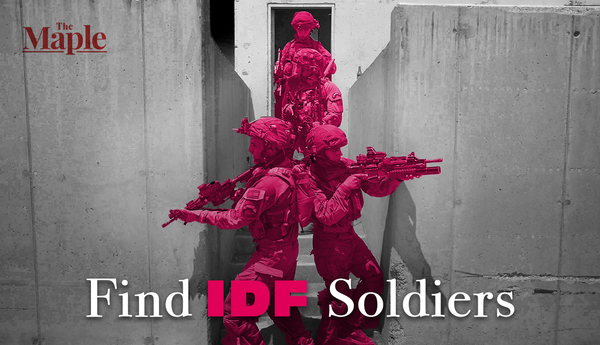During the early Cold War, Canada’s much-mythologized “peacekeepers” worked closely with combat operations, especially those conducted by former colonial powers. From the 1970s onwards, Canadian peacekeeping took on a more directly forceful turn – far out of step with rhetoric that suggests peacekeeping is based on “consent,” “impartiality” and minimal use of force.
In this second article, we examine the shift from early “peacekeeping” to overt war-making. Part three will examine how this transition played out in Africa and Haiti.
White paper considerations
The federal government’s 1964 "White Paper on Defence" noted that from the beginning, Canada’s “adherence to the UN charter” went hand in hand with the development of NATO’s “system of collective military forces.”
During this period, the paper observed, the “need for international peace-keeping” emerged not with the expansion of human rights law or a desire for peace, but as a result of the “dissolution of pre-war empires.”
Even at this early stage, the white paper proposed to change peacekeeping norms to allow for more “flexibility” in the use of military force.
The peacekeeping of the future, it claimed, could be composed of new “regular military formations, which need not be earmarked exclusively for United Nations service.”
The 1984 "Defense White Paper" went even further. In a supposedly less-stable world, marked by the apparent threat of a “nuclear holocaust,” the paper mocked the idea of nuclear disarmament. It warned that in new regions, “instability and the potential for violence are widespread,” and called for even more “forceful” deployments of “our armed forces for peacekeeping and truce supervision.”
This aggressive shift is reflected in Canada’s official “peacekeeping” operations from 1964 to the present.
Cyprus and the origins of ‘airborne peacekeeping’
Since 1964, 25,000 Canadian Armed Forces (CAF) members have at various times been stationed in Cyprus as part of the United Nations Force. It's a “bond” that Prime Minister Justin Trudeau likes to fondly recall.
At the beginning of the mission, Canadians made up 1,125 of the 6,000-person UN force. A year into the operation, external affairs minister Paul Martin claimed the Canadian forces “are engaged not in killing people but in fighting under the United Nations for peace.”
But that would soon change.
In April 1974, Canada sent 486 paratroopers from the Airborne Regiment’s 1st unit. That summer, a military coup against the Cypriot government sparked a Turkish invasion. Soon after, the peacekeepers were tasked with maintaining an uneasy ceasefire.
After a skirmish at Kyrenia harbour, Greek forces attacked Camp Kronberg on July 23. The Canadian peacekeepers responded by firing 600 rounds of heavy artillery, including .50 caliber bullets. Researcher David A. Kielstra observed that Canada’s response was a "precedent setting show of force and arms not seen since the Korean War.”
Soon after, the federal cabinet doubled the peacekeeping force and sent them armoured personnel carriers and anti-tank weapons primed for “heavy shelling.” Asked about the expanded equipment deployment, Gen. Jacques Alfred Dextraze commented at the time that he “likes to drive thumbtacks with a 20-pound hammer.”
War-making and ‘peacekeeping’ in the Gulf War
Canada’s intervention in the Gulf War began in August 1990. Three heavily armed navy warships were followed by the deployment of CF-18 fighter jets in October. The warplanes were tasked with taking “control of the skies over the Gulf.”
In January 1991, the coalition launched a “devastating air campaign” against Iraq. The Canadian pilots conducted 56 bombing missions involving 32 500-pound bombs and, all told, “over fifteen thousand tons of high explosives,” alongside campaigns by the United States, France, Saudi Arabia and others.
This was followed by, according to the Canadian army, “an armoured and infantry ground offensive” to drive the Iraqi army out of Kuwait.
Then the peacekeepers entered.
After the March 3, 1991 ceasefire, the Canadian government again deployed 370 soldiers as UN peacekeepers as part of the UN Iraq-Kuwait Observation Mission.
However, as the Globe and Mail noted on February 19, 1991, the Iraqi military’s withdrawal would be “made more difficult because of the destruction by allied forces of most bridges spanning the Tigris and Euphrates in Southern Iraq.”
Today, the ceasefire enforcement is remembered as Canada’s primary contribution. However, this came after the airstrikes and ground troop offensive.
‘New peacekeeping’ in Yugoslavia
In a 2000 report, the Senate Committee on Foreign Affairs claimed that, during the breakup of Yugoslavia, “NATO defined for itself a new peacekeeping.” That “new peacekeeping” mission was closely linked to two incredibly destructive NATO bombing campaigns.
The first Canadian peace observation troops entered Yugoslavia in the fall of 1991, a few months after Croatia declared independence from the republic. After a rough stalemate was achieved, the United Nations established a UN Protection Force on February 15, 1992.
Fighting resumed in September 1993 in an area that came to be known as the “Medak Pocket.” Major Ian Summerfield wrote that advancing light infantry peacekeepers were fired on by Croatian soldiers.
The peacekeepers met force with force. The Canadian troops, “unlike many other nations,” deployed “[their] full compliment [sic] of war-fighting weaponry and equipment.” According to the Canadian military today: “It was the heaviest action that Canadian troops had experienced since the Korean War.”
According to Summerfield, the mission from then on transitioned into a primarily “UN-authorized, NATO-led force.” NATO officials began exploring the efficacy of airstrikes against Serbian forces starting in February 1994.
In September, NATO’s “Intervention Force,” which included Canada, launched its first airstrike against a Bosnian-Serb tank in Sarajevo. by May 1995, Operation Deliberate Force had dropped 1,026 bombs on 386 targets.
While these attacks were nominally aimed at Serbian military targets, the Canadian bombing campaign was known for its faulty accuracy. As well, the bombers had a mandate to target Serbia’s “supporting infrastructure and lines of communication.”
Soon after, the intervention shifted and the Canadian forces joined the United Nations Mission in Bosnia and Herzegovina. But the intervention remained bloody.
Major-General Lewis Mackenzie, the head of Canada’s peacekeeping operation in Sarajevo, lamented: “There is no country next door to Bosnia comparable to Saudi Arabia in the Gulf war where you can put a coalition force together to do the job.” Mackenzie further recalled warning that a NATO-led military intervention in Yugoslavia would be difficult “without killing a lot of people.”
In January 1996, after the opening of the Sarajevo airport, 1,200 CAF members served as part of a better-armed NATO “stabilization force.”
“The mission was not a regular peacekeeping mission,” Summerfield wrote. “The Canadian commander had insisted the Canadian troops bring heavy weaponry to the mission and authorized more liberal rules of engagement.”
Canada and NATO launched another series of airstrikes in the spring of 1999.
“Of course we would prefer a [UN] security council mandate,” foreign affairs spokesman Stewart Wheeler said at the time. But the absence of one, he insisted, “cannot be allowed to tie our hands.”
All told, Canadian CF-18s flew 684 sorties and dropped 658 bombs, totalling 500,000 pounds of “high-explosive” munitions. The main bomb involved, the Mark 82 500-pound bomb, was previously dropped by the Canadian Desert Cats on the “highway of death” in the Gulf War.
Canadian planes also dropped over 100 2,000-pound bombs. One military official said:
“When you talk about the lethality of a bomb, it is not linear in the level of destruction from a 500-pound bomb to a 2,000-pound bomb. It is exponential. A 500-pound bomb is basically a poof, a little flash. A 2,000 pound bomb is incredible destruction."
One CF-18 wingman recalled: “The whole Western air force is basically dropping bombs on this country and it looked like, basically, it looked like hell.”
“The whole ground is burning,” he said. “There’s just fire everywhere.”
Canadian peacekeeper Fred Doucette recalled cheering at the bombing: “The explosions were deafening and black clouds rose over the area,” he wrote in his memoir. “In the sky above, I counted six NATO aircraft circling patiently waiting their turn to dump their destructive loads. It felt great…”
Yet, as former Liberal leader Michael Ignatieff noted in his 2003 defence of the Iraq War, Empire Lite, the campaign failed to actually bring peace: “Instead of moral payback, there is just revenge killing” with “Serbs barricaded in their enclaves, most of the Roma or Gypsies still in camps outside Kosovo and only the Kosovars free to walk the streets … This is a significant embarrassment.”
More forceful peacekeeping
The interventions in Iraq, Croatia and Bosnia marked a clear shift in the nature of Canadian peacekeeping towards more direct use of force. By all accounts, this shift has been permanent.
In 2006, retired diplomat Patricia Fortier remarked that since roughly the 1990s, Canada’s peacekeeping forces have been dominated by military personnel, equipment and norms.
“The military remains the backbone of any mission in which they play a part,” Fortier concluded, “because they can deploy more quickly, have varied resources, a chain of command, and, if necessary, use of overwhelming deadly force.” Regional powers and overlapping UN mandates to justify interventions, Fortier continued, are an unavoidable part of “modern peacekeeping” as well.
In 2017, Chief of Reserves Howard Coombs wrote that “the harsh reality” of modern day peacekeeping requires “more robust forces and capabilities able to operate in a sustained fashion to create peace in unstable environments.”
This case for an expanded use of military violence has been made in interventions against formal armies and non-military combatants (often referred to as “insurgents”) alike.
Mitchell Thompson is a writer with PressProgress, an occasional radio producer and a researcher based in Toronto.
CORRECTION: A previous version of the article cited Michael Ignatieff as a former Prime Minister, when in fact he was a former Liberal leader. The story has been updated. The Maple regrets this error.






